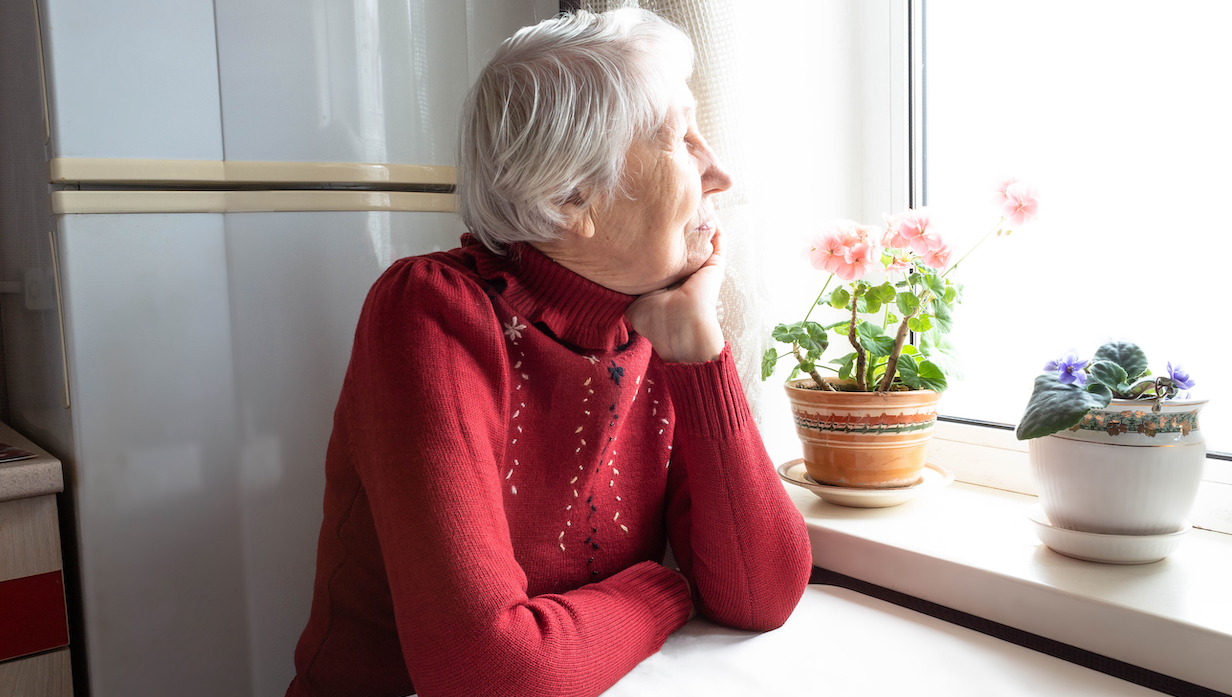
To share your experience, join the conversation
Importance of Social Connection for Seniors
Insights from the U.S. Surgeon General’s Advisory (Part 2)
Social connection is one of the most critical aspects of human health and well-being, shaping our mental and physical health. The U.S. Surgeon General’s Advisory on the Healing Power of Social Connection and Community unpacks the complexity of social connection, the factors that shape social connections, and who is most at risk for social disconnection.
What Leads Us to Be More or Less Socially Connected?
The degree of social connection that any individual experiences depends on many factors, from the specifics of their personal lives to broader societal trends. Our social connections are influenced by various factors, including some beyond our control, such as personality traits, life stages, and cultural and socio-economic conditions.
Personality and Life Stages
Extroverts are more inclined to find and keep social connections than introverts. Life stages are also critical. For example, young adults may experience a period of high social activity as they follow educational and career paths and become romantically and sexually involved. Older adults may experience declining social activity as they retire, experience health issues, and lose friends and loved ones.
Cultural Norms
Cultural norms influence social behavior. These norms can vary among collectivist cultures, where the community is emphasized, and members’ fates are linked, and individualist cultures, where personal independence and achievement are emphasized, sometimes to the detriment of communal ties.
Socio-Economic Conditions
Economic stability is frequently connected to social connections. Economically secure people are more likely to participate in community activities, maintain friendships, and invest in relationships. On the other hand, those who are economically disadvantaged tend to be more socially isolated. They often lack the resources to participate in social activities or experience the stigma of financial hardship.
Seniors: At Highest Risk for Social Disconnection
The social risk factors for late life differ from those for younger adults because older people are more likely to experience certain life events that increase their risk of social isolation and loneliness. Adults over age 65 are at high risk of social isolation and loneliness due to several factors, including poor physical health, retirement, loss of social roles, and loss of peers.
Physical Health Decline
A significant cause of social isolation among older adults is a decline in physical wellness often associated with aging. Illnesses, mobility difficulties, and a range of chronic conditions like hearing and vision loss can diminish an older adult’s ability to engage in social activities. For instance, a senior with arthritis might have difficulty leaving their house or attending social events. Likewise, people with hearing impairments might find engaging in conversations more challenging and thus withdraw from social situations. Moreover, the requirement for frequent medical appointments can also be isolating. Seniors may spend extended periods in hospitals or at home recovering from illnesses, creating more obstacles that make it harder to maintain social networks. While the growing dependence on others who provide direct medical care may be good for physical health, it can sometimes result in a loss of autonomy and the ability to engage in spontaneous social activities, only exacerbating feelings of loneliness.
Loss of Social Roles
Another critical factor is the social shifts that accompany aging. Retirement, while often welcomed as a well-deserved rest period, can result in the sudden loss of many daily social interactions and a sense of purpose derived from work. For many older adults, the workplace is a central hub of social life, and retirement can leave a social chasm. Moving from work to retirement can also lead to feelings of uncertainty and a loss of purpose and social identity, making it difficult to establish new social connections. Moreover, the roles that older adults traditionally held within their families and communities may shift. For instance, older adults may no longer be the focal point of their families, and as a result, they may feel neglected and unimportant. This could lead to a reduced sense of social value and fewer social interactions.
Bereavement and Loneliness
As people get older, they often experience the loss of peers, friends, and spouses. Bereavement is a common part of aging, and the passing of a spouse or close friend can lead to significant changes in the social life of older adults. For instance, losing a spouse can bring about intense feelings of loneliness and disrupt long-established social patterns, serving as a painful reminder of their own mortality.
Many people experience increased social withdrawal as a result of grief. An older person may not feel like joining their friends for an outing, or they may fear that others won’t understand the pain of losing their spouse. This can lead to increasing loneliness and depression and eventually create a vicious circle: loneliness worsens mental health, which in turn worsens loneliness, making it increasingly difficult to reconnect with others.
Reduced Mobility and Transportation Challenges
Mobility is another crucial hurdle to interpersonal connectivity. As people age, many find it more challenging to move about as they once could. For those living with arthritis, osteoporosis, and other common ailments of aging, it can be challenging to leave home or to make it to social occasions, let alone a neighbor’s or grandchild’s house.
Transportation issues exacerbate the situation. Seniors may no longer drive due to safety concerns or reduced mobility. Public transportation may not be accessible to those who require assistance with walking or navigating stairs. As a result, some seniors may prefer to stay home alone rather than inconvenience others, and individuals with significant physical challenges may become homebound.
Impact of Living Arrangements
The nature of older people’s living arrangements is also an essential determinant of social integration. Older people are the group most likely to live alone, and living alone increases the risk of social isolation as opportunities for spontaneous social contact become fewer. Living alone may suit those who are contented and self-sufficient. Still, others might find the lack of regular contact with another person distressing.
By contrast, it could be more difficult for those providing care in public or private institutional settings, such as nursing homes or assisted living facilities. Such environments offer ample opportunity for social interaction. Still, cognitive decline, physical health issues, and privacy loss can limit the ability to find enjoyment. Moreover, institutionalization can also entail the loss of one’s former home and autonomy—a likely factor contributing to social isolation and an overall disconnect from former social networks. The increasing availability of Continuing Care Retirement Communities (CCRCs) signals a new era in addressing the health and social needs of seniors.
Societal Ageism
The societal attitudes towards the aging process also exacerbate it. Ageism, or prejudice against older people, is commonplace and can be overt, such as employment discrimination or ageist stereotypes in media, or covert, such as the seemingly harmless practice of trivializing and minimizing the concerns of older adults. These attitudes can lead to the marginalization of older adults.
Ageism can also impact how younger people interact with an older person, provoking contempt or avoidance. Suppose seniors feel that they are being ignored or condescended to. In that case, they might avoid social interactions to minimize these negative experiences. A learning loop might develop whereby loneliness and isolation only become more pervasive.
Mental Health Implications
Social isolation is a common and potentially devastating experience for many older adults. Chronic loneliness and social isolation have strong correlations with depression, anxiety, and cognitive decline. Studies have shown that socially isolated seniors are more likely to develop dementia and other cognitive impairments. Regular, engaged social activity keeps the brain well-functioning because social interactions stimulate it.
Moreover, the emotional toll of loneliness can contribute to overall health decline because the effects of loneliness on health are comparable to those of smoking or obesity, increasing the risk of premature death. Additionally, the mental health challenges stemming from social isolation can create a cycle: loneliness leads to depression, which in turn makes it more difficult to reach out to others and alleviate the loneliness.
Addressing the vital importance of social connection for health and well-being, the “U.S. Surgeon General’s Advisory on the Healing Effects of Social Connection and Community” summarizes the current science on social connection, the costs of social disconnection, and the role of technology in making and maintaining social contacts. The Advisory also considers the critical role of resilience and the lessons learned from the COVID-19 pandemic.
Looking ahead, there is much work to do to ensure that social connection remains a central tenet of public health. It is imperative that seniors have a chance to build and maintain a network of meaningful relationships, regardless of their circumstances. In future posts, the Spiritual Seniors’ editors will present other important aspects of the epidemic of loneliness and isolation discussed in the Surgeon General’s comprehensive report.
References:
1. U.S. Surgeon General’s Advisory on the Healing Power of Social Connection and Community: A Policy Position Paper, 2022 2. This brief provides a snapshot of the forces that shape social connection, the harms of social disconnection, and technologies in modern social life. It also discusses the effects of the COVID-19 pandemic on social connections and resilience.
2. Holt-Lunstad, J. (2022). Social Connection and Longevity and Health. Annual Review of Public Health, 43(1), 193-210.
Combatting Loneliness in Older Adults. The Triangle Tribune, 26(16), 9A.
Reader submissions may be lightly edited for clarity and length, while preserving the writer’s original voice.





Rebecca Adams June 18, 2025
The article does an excellent job at defining and explaining the impact of loneliness in seniors but it doesn’t give solutions.
The Editors June 18, 2025
Thank you for your kind words. Please stay tuned to this Sunday’s article which discusses “Lonelygenic Environments.”
Divina Flamingarrow July 27, 2025
I agree with Rebecca Adams above. And in the subject above, you nail many important points. I have retired to start a 1st time business for helping others transform. It is being developed to help people online, on zoom meetings and in person to engage actively in their own healing and wellness where their 50% effort is required and where we gather in zoom meetings and attend wellness packages of our choice to become healthier and happier!! The Zoom meetings are free M-W-F at 9 am PT. I just connected with an IT helper for my current website. I can be reached at Divina@lightblessingservices.com. I am in Arizona. I am a retired nurse. I am seeing many happy results and outcomes in my long time work with Dr. and Master Sha!